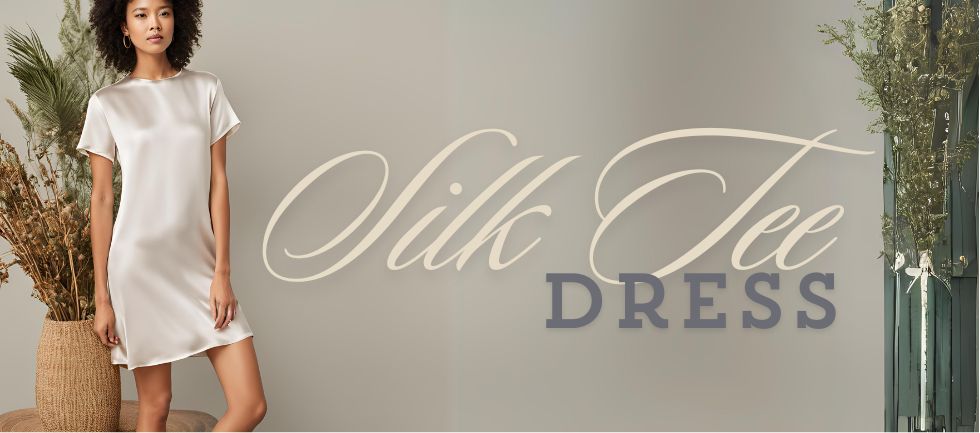Creating a lined drop waist dress can be an exciting and rewarding sewing project, perfect for expanding your skills and adding a timeless piece to your wardrobe. Drop waist dresses, known for their distinctive silhouette, have made several comebacks in fashion history and continue to be a favorite among fashion enthusiasts.
Drop waist dresses, also known as "flapper dresses," gained immense popularity in the 1920s. They were a hallmark of the flapper era, symbolizing freedom and a break from traditional fashion norms. The drop waist design, which features a waistline that sits lower on the hips rather than the natural waist, creates a unique and flattering silhouette. This style elongates the torso and adds a touch of elegance and sophistication to any outfit.
The drop waist dress has resurfaced in various forms over the decades, continually evolving to suit contemporary trends. Today, it remains a versatile and stylish option for many occasions, from casual outings to formal events. Whether you're new to sewing or an experienced seamstress, this tutorial will provide detailed steps and helpful tips to create a beautiful lined drop waist dress that you can proudly wear.
This sewing tutorial will guide you through the process of making a lined drop waist dress, ensuring a professional finish and a comfortable fit.
Is Drop Waist Back in Style?
Drop waist dresses have indeed made a comeback in recent years, reappearing on runways and in fashion collections. Designers have embraced this vintage-inspired silhouette, incorporating modern elements to make it relevant for today's fashion scene. The resurgence of the drop waist dress can be attributed to its timeless appeal and its ability to flatter various body types.
One reason the drop waist dress is back in style is its versatility. It can be dressed up or down, making it suitable for a wide range of occasions. Pair it with heels and statement jewelry for a chic evening look, or wear it with flats and a denim jacket for a casual day out. The drop waist dress offers endless styling possibilities, allowing fashion enthusiasts to express their personal style.
Moreover, the drop waist dress's relaxed fit makes it a comfortable and practical choice. Unlike more fitted dresses, it allows for ease of movement and doesn't cling to the body, making it an excellent option for those who prefer a looser silhouette. As fashion continues to prioritize comfort and functionality, it's no surprise that the drop waist dress has regained popularity.
When Did Drop Waist Dresses Become Popular?
The drop waist dress first became popular in the 1920s, during the flapper era. This period was characterized by significant social and cultural changes, with women embracing more freedom and independence. The drop waist dress was a symbol of this newfound liberation, breaking away from the restrictive corsets and structured garments of previous decades.
Flapper dresses featured a loose, relaxed fit with a waistline that sat low on the hips, often adorned with intricate beadwork, fringe, and other decorative elements. These dresses were designed for dancing and movement, reflecting the energetic and carefree spirit of the Roaring Twenties. The drop waist dress was a key component of the flapper style, representing a shift towards more modern and progressive fashion.
After its initial popularity in the 1920s, the drop waist dress experienced a revival in the 1960s. This decade saw a resurgence of vintage-inspired fashion, with designers drawing inspiration from the past. The drop waist dress was reimagined with contemporary fabrics and details, making it a fashionable choice for the mod subculture. Its enduring appeal ensured that it remained a staple in women's wardrobes.
What is Another Name for a Drop Waist Dress?
Another name for a drop waist dress is the "flapper dress." This term originated from the 1920s, when the style was first popularized by the flapper subculture. Flapper dresses were characterized by their loose fit, low waistline, and often elaborate embellishments. They were designed for dancing and socializing, reflecting the vibrant and dynamic lifestyle of the flappers.
The term "flapper" itself refers to young women in the 1920s who embraced a more liberated and unconventional lifestyle. They were known for their bold fashion choices, including shorter hemlines, bobbed hair, and heavy makeup. The flapper dress was a key element of their distinctive style, symbolizing a break from traditional norms and a celebration of individuality.
In addition to "flapper dress," the drop waist dress is sometimes referred to as a "low-waist dress" or a "hip-waist dress." These terms highlight the unique placement of the waistline, which sits lower on the hips rather than at the natural waist. Regardless of the name, the drop waist dress remains a timeless and elegant choice for fashion-forward individuals.
What Body Type Does a Drop Waist Look Good On?
A drop waist dress can be flattering on various body types, thanks to its unique silhouette and relaxed fit. However, it tends to look particularly good on individuals with an hourglass or pear-shaped figure. The lower waistline elongates the torso and draws attention to the hips, creating a balanced and proportionate look.
For those with an hourglass figure, the drop waist dress accentuates the natural curves of the body without being too clingy. It highlights the waist and hips while maintaining a comfortable and flattering fit. This style can enhance the overall silhouette, creating a sophisticated and elegant appearance.
Pear-shaped individuals can also benefit from the drop waist design, as it helps to balance the proportions between the upper and lower body. The relaxed fit of the dress can help to minimize the appearance of wider hips, while the lower waistline draws attention to the waist and creates a more streamlined look. Additionally, the drop waist dress can add a touch of glamour and sophistication to any outfit, making it a versatile choice for various occasions.
What is the Difference Between Natural Waist and Drop Waist?

The primary difference between a natural waist and a drop waist lies in the placement of the waistline. The natural waist refers to the narrowest part of the torso, typically located just above the belly button and below the ribcage. This is the traditional waistline for most dresses and garments, as it accentuates the natural curves of the body and creates a defined silhouette.
In contrast, the drop waist sits lower on the hips, often several inches below the natural waist. This design creates a longer torso and a more relaxed fit, which can be both comfortable and flattering. The drop waist dress is characterized by its loose, flowing silhouette, which allows for ease of movement and a more casual, effortless look.
The difference between the natural waist and the drop waist also affects the overall style and appearance of the dress. A natural waist dress tends to create a more structured and fitted look, emphasizing the curves of the body and creating a defined waistline. On the other hand, a drop waist dress offers a more relaxed and elongated silhouette, making it a versatile and stylish choice for various occasions.
Materials and Supplies Needed
Before you begin sewing your lined drop waist dress, it's important to gather all the necessary materials and supplies. Here is a list of items you will need for this project:
- Fabric (main fabric and lining)
- Sewing machine
- Thread (matching color)
- Scissors
- Measuring tape
- Pins
- Zipper (optional)
- Pattern (drop waist dress pattern)
- Iron and ironing board
- Fabric chalk or marker
- Seam ripper
Choosing the right fabric is crucial for the success of your project. For the main fabric, opt for lightweight and breathable materials such as cotton, linen, or rayon. These fabrics drape well and provide a comfortable fit. For the lining, consider using a smooth and lightweight fabric such as silk or polyester, which will add a luxurious feel to your dress.
Cutting the Fabric
Once you have gathered all your materials, it's time to cut the fabric. Start by laying out your fabric on a flat surface and smoothing out any wrinkles. Place the pattern pieces on the fabric, ensuring that they are aligned with the grainline. Use fabric chalk or a marker to trace around the pattern pieces, then carefully cut along the traced lines with sharp scissors.
Repeat this process for the lining fabric, making sure to cut out the same pattern pieces as the main fabric. Take your time and ensure that all pieces are cut accurately, as this will affect the overall fit and appearance of your dress. Once all the pieces are cut, you can begin assembling the dress.
Assembling the Dress
Begin by sewing the main fabric pieces together, following the pattern instructions. Use pins to hold the pieces in place and ensure that the seams are aligned correctly. Sew the seams with a straight stitch, then press them open with an iron to create a smooth finish. Repeat this process for the lining fabric, sewing the pieces together and pressing the seams.
Next, attach the lining to the main fabric. Place the lining inside the main fabric, with the right sides facing each other. Pin the two layers together along the neckline and armholes, then sew them together with a straight stitch. Turn the dress right side out and press the seams with an iron.
If your pattern includes a zipper, now is the time to insert it. Follow the pattern instructions to attach the zipper to the back of the dress, ensuring that it is aligned correctly and functions smoothly. Once the zipper is in place, finish the hemline by folding the fabric under and sewing a narrow hem. Press the hem with an iron to create a clean and professional finish.
Finishing Touches
The final steps in creating your lined drop waist dress involve hemming and adding any finishing touches. For the hem, turn up the bottom edge of the outer fabric skirt by 1/2 inch and press, then turn it up again by 1 inch and sew a narrow hem. Repeat this process with the lining skirt, making sure the lining hem is slightly shorter than the outer fabric hem to prevent it from showing.
If your dress design includes any additional features, such as pockets, a zipper, or buttons, now is the time to add them. Follow the instructions on your pattern carefully to ensure these elements are added correctly and securely. Give your dress a final press to remove any remaining wrinkles and to set the seams.



